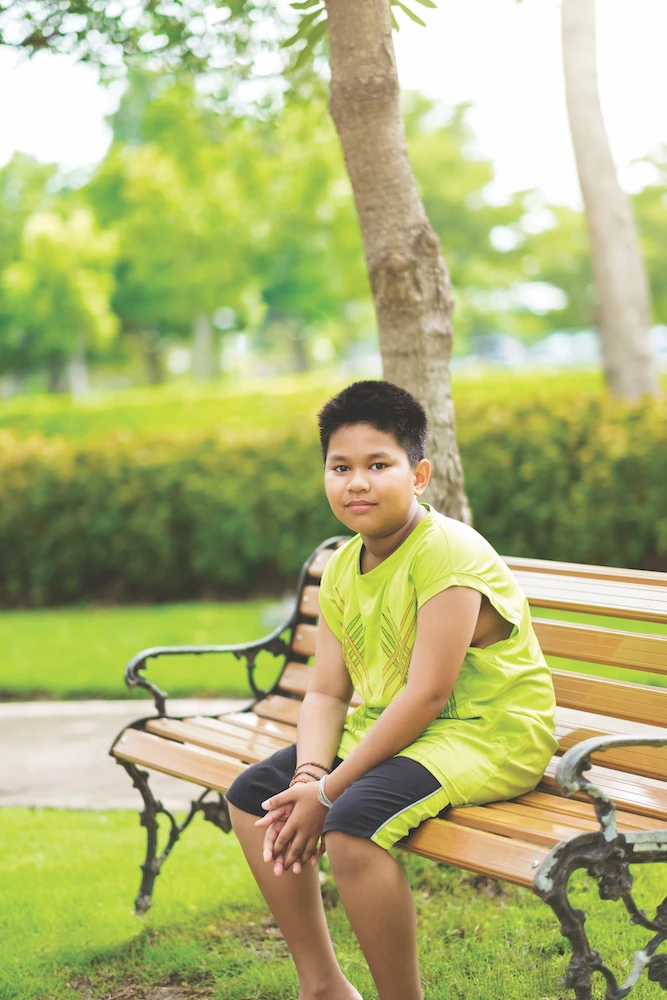News & Articles

Types Of Childhood Cancer (in 2022)

Having a child with cancer can be devastating for any parent. Unfortunately, age does not discriminate when it comes to cancer. Dr Anselm Lee shares more.
Unlike cancer in adults, cancer in children is relatively rare. Around the world, an estimated 400,000 children and adolescents aged 1–19 years develop cancer every year1.
The causes of cancer in children are unclear. While it is a common perception that cancers in children are genetically inherited, only 1–2% of childhood cancers are due to genetic predispositions in the family.
In addition, children do not develop cancer from environmental factors such as smoking, alcohol, diet, or radiation. However, understanding the types of cancer that affect children and the treatments available can help parents better prepare what to expect.
Top 5 cancers in children
The top types of cancers in children and adolescents aged 0–19 are leukaemia, brain tumours, lymphoma, neuroblastoma, and sarcoma.
- Leukaemia, a type of blood cancer caused by the uncontrolled production of abnormal white blood cells in the bone marrow, is the most common type of cancer in children. Nearly 3 out of 4 childhood leukaemias are acute lymphoblastic leukaemias (ALL)2.
- Brain tumours are abnormal growths that develop in or around the brain. Brain tumours can be cancerous or noncancerous. Because of the location of the tumour, brain tumours and their treatment can cause significant side effects or long-term impairment to a child or adolescent’s neurological function.
- Lymphoma, a cancer of the lymphatic system, occurs when the infection-fighting cells of the immune system grow uncontrollably. There are two main subtypes of lymphoma: non-Hodgkin and Hodgkin lymphoma.
- Neuroblastoma in children develops in the immature nerve tissues that form the sympathetic nervous system. It usually affects the adrenal glands inside the abdomen. The disease is common in babies and children under the age of 5.
- Sarcoma is a cancer that develops in the bone or soft tissue such as muscle or connective tissues. There are different types of sarcoma that may arise in children. Ewing sarcoma and osteosarcoma are the two main types of bone cancers, both of which are more common in growing teenagers. Rhabdomyosarcoma is the most common type of sarcoma in childhood and may appear in any part of the body.
Treating cancer in children
The treatment of cancer in children and adolescents depends on two key treatment considerations: the exact nature of the disease and the risk classification of the disease.
The first key consideration when treating cancer in children is understanding the exact nature of the child’s disease. This helps doctors determine an appropriate treatment plan that will achieve the most optimal outcome for the child.
Leukaemia, for instance, is treated differently depending on its respective subtype (myeloid or lymphoid) as well as its rate of disease progression (acute or chronic). Similarly, non-Hodgkin lymphoma and Hodgkin lymphoma have different treatment strategies depending on the type of lymphoma and its corresponding subtypes.
Likewise, there are more than 20 types of brain cancers, each of which are treated differently. In the case of neuroblastoma, the disease type determines whether the child requires intensive treatment or any treatment at all. By tailoring treatment to each child’s body size, shape, general health and their individual disease, even very sick children can receive anti-cancer treatment.
The second key consideration when treating cancer in children is the risk classification of the disease. The risk classification for each childhood cancer is generally defined by the disease’s biological features and the extent of the disease in the child’s body. In the case of leukaemia, which does not come in stages, the risk classification helps doctors determine the risk group each patient falls under (e.g. standard risk, high risk, or very high risk), which in turn helps doctors plan the most effective treatment for the patient.
Giving every child the best future
The time ahead remains bright for many children with cancer; in Singapore, about 75% of children and adolescents diagnosed and treated for cancer survive for more than 10 years, with many of them cured of disease. As treatment for childhood cancers continues to evolve and become more precise and accurate, there is great hope that we can continue to provide the best care for children with cancer and meet our goal of giving every child the best future.
Parkway Cancer Centre’s paediatric haematology and oncology clinic is dedicated to providing specialised treatment and care for children with cancer. Our personalised, multidisciplinary approach and expertise are focused on bringing children the optimal care and best chance of survival in a safe and supportive environment.
1World Health Organization, 2021
2American Cancer Society, 2019
| POSTED IN | Cancer Treatments |
| TAGS | brain cancer, history of cancer, leukaemia in children, sarcoma |
| READ MORE ABOUT | Acute Lymphoblastic Leukaemia (ALL) in Children, Hodgkin Lymphoma, Non-Hodgkin Lymphoma, Sarcoma |
| PUBLISHED | 01 September 2022 |
